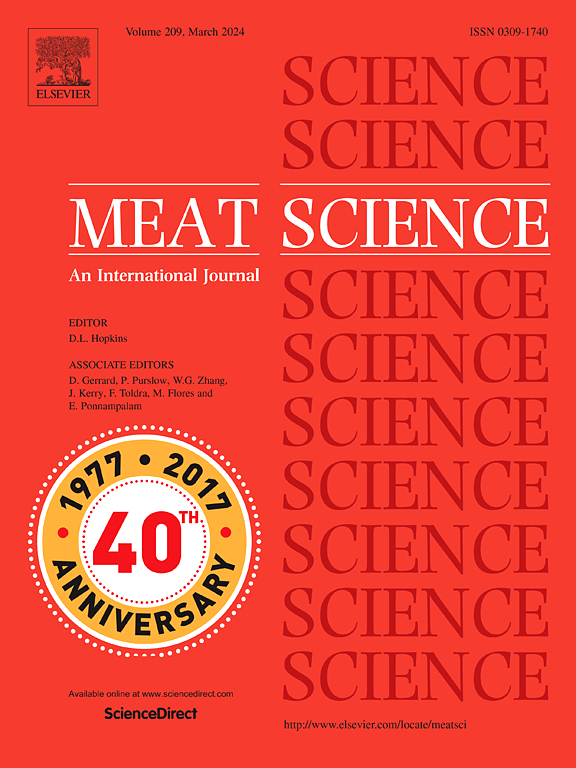交联/乙酰化木薯淀粉对肌纤维蛋白凝胶的胶凝特性、流变行为和微观结构的影响:分子相互作用和相变透视。
IF 7.1
1区 农林科学
Q1 Agricultural and Biological Sciences
引用次数: 0
摘要
本研究主要探讨了交联木薯淀粉(CTS)或乙酰化木薯淀粉(ATS)在不同含量(2%、4%、6%和 8%,w/w)的肌纤维蛋白(MP)凝胶中凝胶特性、流变性能和超微结构的变化。研究结果表明,交联木薯淀粉(CTS)或乙酰化木薯淀粉(ATS)明显改善了混合 MP 凝胶的胶凝特性(如凝胶强度和保水性),其改善程度与剂量有关(P<0.05)。本文章由计算机程序翻译,如有差异,请以英文原文为准。
Effects of cross-linked/acetylated tapioca starches on the gelling properties, rheological behaviors and microstructure of myofibrillar protein gels: Perspective on molecular interactions and phase transition
The present work mainly investigated the changes of gel characteristics, rheological properties and ultrastructure of myofibrillar protein (MP) gels with varying amounts (2, 4, 6, and 8 %, w/w) of cross-linked tapioca starch (CTS) or acetylated tapioca starch (ATS). The findings showed that CTS or ATS notably improved the gelling characteristics (such as gel strength and water retention) of mixed MP gels in a dose-dependent manner (P < 0.05), which was clearly verified by the results of rheological behavior tests under different modes. Moreover, compared to ATS, CTS rendered higher gel strength and promoted the formation of a more uniform and smoother mixed MP gel matrix, which was mainly attributed to the higher peak viscosity of CTS. Furthermore, the images of iodine staining indicated that in mixed MP gels, the continuous phase supported by MP was gradually transited to being starch supported as the amounts of CTS or ATS increased between 2 % and 8 %. Additionally, hydrophobic interactions and disulfide bonds were the principal chemical forces of mixed MP gels, which could promote the occurrence phase transition. Briefly, our present work provided some vital understanding of the molecular interactions between MP and modified tapioca starches, which could efficiently modulate the quality profiles of meat products.
求助全文
通过发布文献求助,成功后即可免费获取论文全文。
去求助
来源期刊

Meat Science
工程技术-食品科技
CiteScore
12.60
自引率
9.90%
发文量
282
审稿时长
60 days
期刊介绍:
The aim of Meat Science is to serve as a suitable platform for the dissemination of interdisciplinary and international knowledge on all factors influencing the properties of meat. While the journal primarily focuses on the flesh of mammals, contributions related to poultry will be considered if they enhance the overall understanding of the relationship between muscle nature and meat quality post mortem. Additionally, papers on large birds (e.g., emus, ostriches) as well as wild-captured mammals and crocodiles will be welcomed.
 求助内容:
求助内容: 应助结果提醒方式:
应助结果提醒方式:


